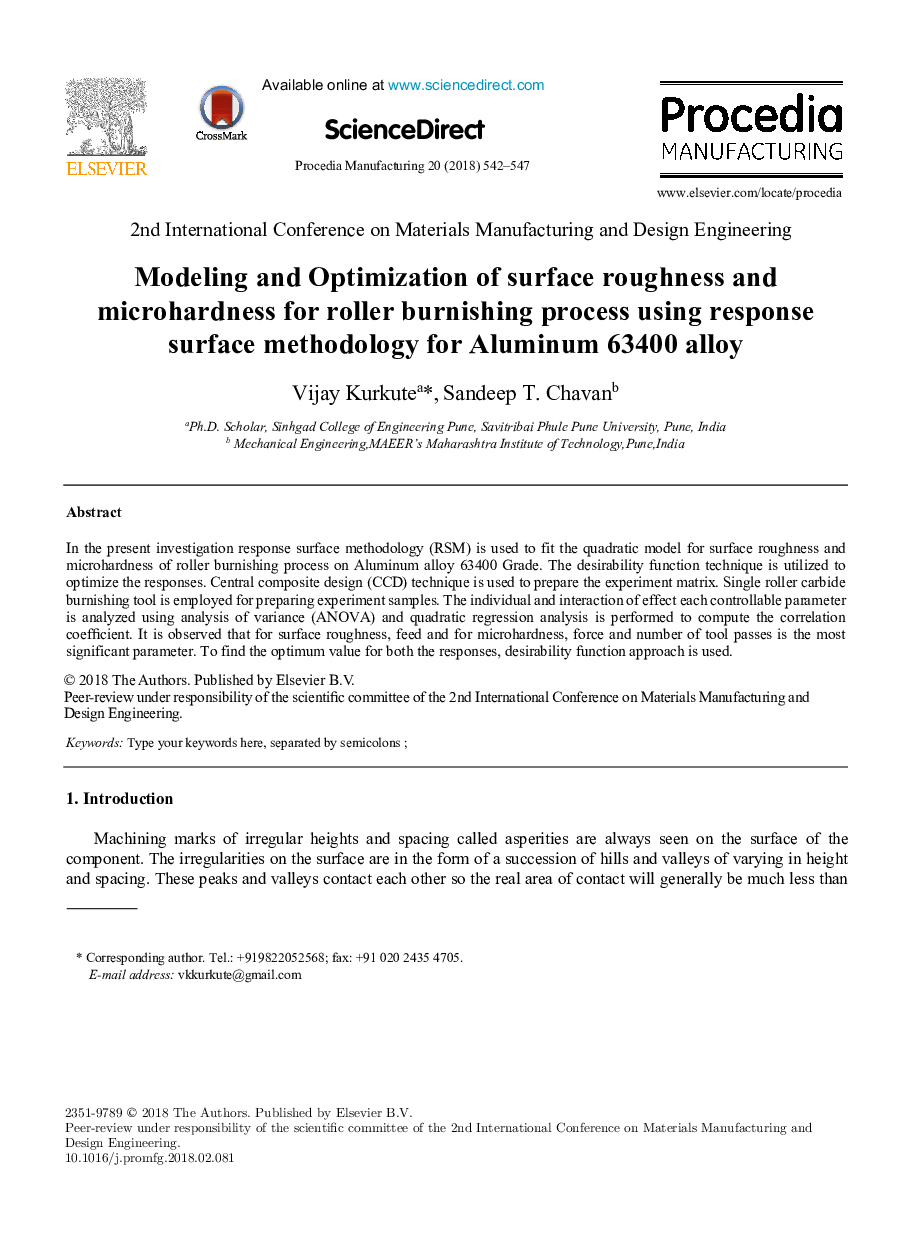| Article ID | Journal | Published Year | Pages | File Type |
|---|---|---|---|---|
| 7545729 | Procedia Manufacturing | 2018 | 6 Pages |
Abstract
In the present investigation response surface methodology (RSM) is used to fit the quadratic model for surface roughness and microhardness of roller burnishing process on Aluminum alloy 63400 Grade. The desirability function technique is utilized to optimize the responses. Central composite design (CCD) technique is used to prepare the experiment matrix. Single roller carbide burnishing tool is employed for preparing experiment samples. The individual and interaction of effect each controllable parameter is analyzed using analysis of variance (ANOVA) and quadratic regression analysis is performed to compute the correlation coefï¬cient. It is observed that for surface roughness, feed and for microhardness, force and number of tool passes is the most significant parameter. To find the optimum value for both the responses, desirability function approach is used.
Related Topics
Physical Sciences and Engineering
Engineering
Industrial and Manufacturing Engineering
Authors
Vijay Kurkute, Sandeep T. Chavan,
